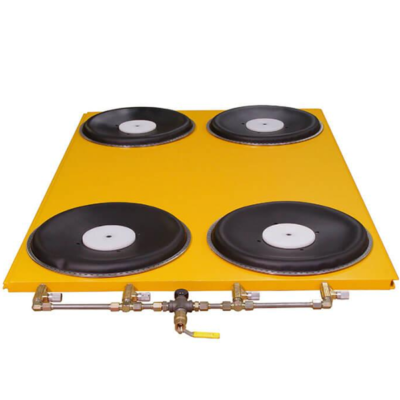Material handling is a critical aspect of various industries, encompassing the movement, storage, protection, and control of materials and products throughout their lifecycle.
From manufacturing and distribution to construction and healthcare, efficient material handling practices are essential for optimizing productivity, minimizing costs, and ensuring workplace safety.
Keep reading as experts at Hovair Systems address the most common questions surrounding material handling.
FAQ #1- What is Material Handling?
Material handling refers to the process of efficiently moving, storing, protecting, and controlling materials and products within a facility or supply chain. It encompasses a wide range of activities, including lifting, transporting, stacking, sorting, and packaging, to optimize workflow, maximizing space utilization, and minimizing waste.
FAQ #2- Why is Material Handling Important?
Effective material handling is crucial for optimizing operational efficiency, reducing labor costs, and enhancing workplace safety. By implementing efficient material handling practices, businesses can streamline processes, minimize errors, and ensure the timely delivery of goods to customers. Additionally, proper material handling helps prevent damage to products, reduce inventory shrinkage, and create a more organized and productive work environment.
FAQ #3- What Role Does Ergonomics Play in Material Handling?
Ergonomics is crucial in material handling to ensure the health, safety, and well-being of workers. Poor ergonomics can lead to musculoskeletal disorders, injuries, and reduced productivity.
Businesses should invest in ergonomic material handling equipment, such as lift decks, air bearing kits, air casters, air beams, air skates, load leveling airbags, and industrial turntables, to minimize strain and fatigue among workers and improve overall efficiency.
FAQ #4- How Can Businesses Improve Material Handling Safety?
Ensuring material handling safety requires a combination of training, risk assessment, and implementation of safety protocols.
Businesses should streamline ergonomic equipment and provide comprehensive training to employees on safe handling techniques, proper equipment usage, and hazard identification.
Additionally, conducting regular safety audits, providing personal protective equipment (PPE), and implementing ergonomic solutions can help reduce the risk of accidents and injuries in the workplace.

FAQ #5- Why Should Businesses Consider Implementing Air Bearing Moving Systems For Their Material Handling Needs?
- Precision and Control: Air bearing systems provide precise and controlled movement of heavy loads, allowing for smooth and accurate positioning without the need for manual effort. This precision is essential for delicate or sensitive materials that require careful handling to prevent damage.
- Versatility: Air bearingsystems are highly versatile and can be customized to accommodate a wide range of load sizes, shapes, and weights. Whether moving large machinery, delicate equipment, or irregularly shaped items, air bearings offer flexibility to meet diverse material handling requirements.
- Reduced Friction: Air bearingsutilize a thin layer of air to create a frictionless interface between the load and the floor, minimizing resistance and allowing for effortless movement. This reduction in friction significantly reduces the force required to move heavy loads, resulting in smoother operation and less wear and tear on equipment.
- Safety: Air bearingsystems contribute to a safer working environment by eliminating the need for manual lifting and pushing of heavy loads. By reducing physical strain on workers and minimizing the risk of musculoskeletal injuries, air bearings help improve workplace safety and ergonomics.
- Efficiency: Air bearingsystems can improve material handling efficiency by allowing for faster and more streamlined operations. With minimal friction and smooth movement, air bearings enable quicker load transfers, shorter cycle times, and increased throughput rates, ultimately enhancing overall productivity.
- Cost Savings: While the initial investment in air bearingtechnology may be higher than in traditional material handling equipment, businesses can realize long-term cost savings through reduced maintenance, improved energy efficiency, and fewer workplace injuries. Additionally, the versatility and durability of air bearing systems offer a high return on investment over time.
FAQ #6- How to Streamline Industry-Leading Material Handling Equipment?
Experience the next level of efficiency in material handling with Hovair Systems. Discover our cutting-edge air bearing moving systems to unlock seamless, precise movement for your heavy loads.
Don’t settle for conventional material handling methods—upgrade to ergonomic equipment moving systems by Hovair Systems and revolutionize your operations today. Increase productivity, enhance workplace safety, and reduce operational costs with our customizable solutions tailored to your specific needs.
Contact us to learn more about how our innovative air caster material handling solutions can transform your business.
